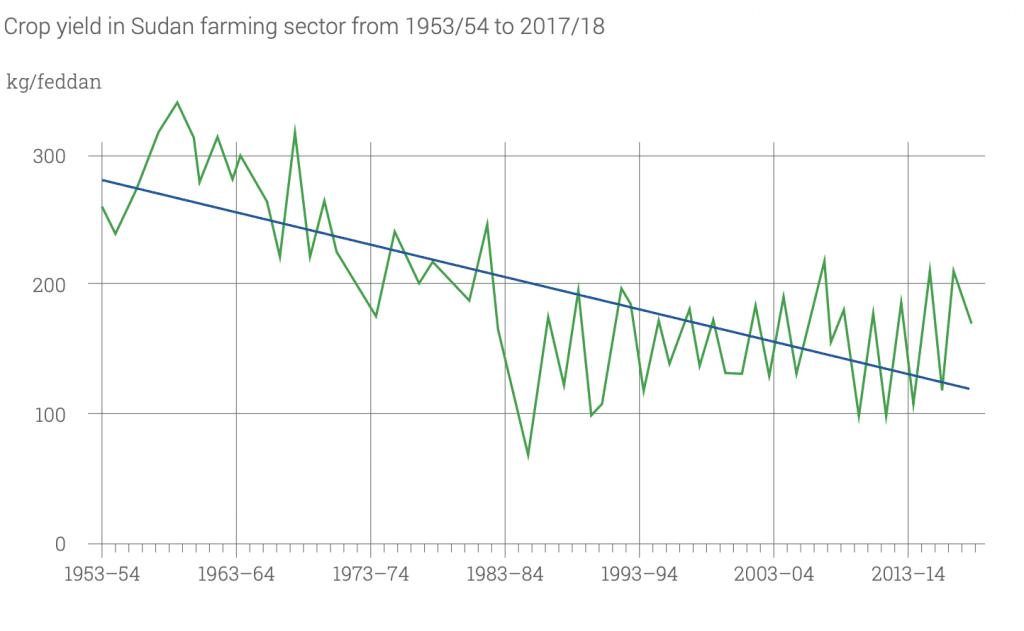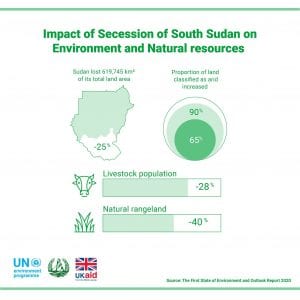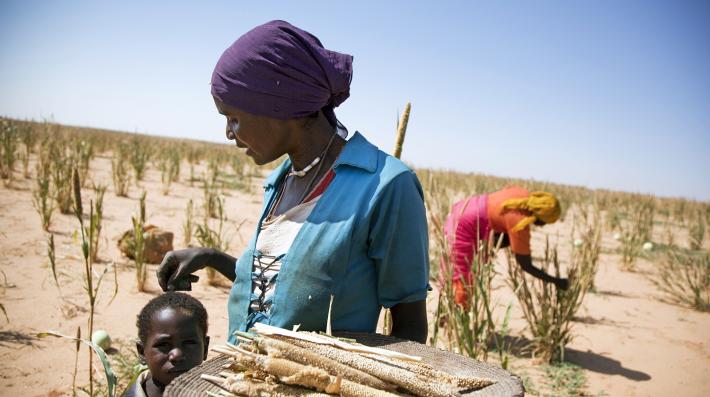Sudan’s climate-based conflicts – report reveals need to address environmental issues
1 November 2020
Linking current socio-economic conditions to environmental conditions is crucial for Sudan to progress, said Prime Minister Abdalla Hamdok during the launch ceremony for the “State of the Environment and Outlook Report 2020”. The report, the first of its kind launched in October, was co-produced by Sudan’s Higher Council for Environment and Natural Resources in Sudan and the United Nations Environment Program (UNEP).
“Social, political and peace issues are related to the environment,” Hamdok said. “Dangers related to climate change are increasing and it affects water resources, agriculture, and livestock,” the Premier said, adding that conflicts in Darfur, Kordofan and other zones are related to the environment.
Sudan’s State of the Environment and Outlook Report is designed to document and assess the current status of Sudan’s environment and propose scenarios and policy options. For the first time, Sudan is taking the environment seriously, says the lead technical author of Sudan’s groundbreaking “State of the Environment and Dr Osman Ali.
Identifying the link between Sudan’s endangered environment and current socio-political challenges, while crucial, has been largely ignored in the past –despite identifying this pernicious trend years ago.
Climate change and conflict
As far back as 2007, former UN Secretary-General Ban Ki-Moon claimed that conflict in Darfur “began as an ecological crisis [that is linked] at least in part from climate change.” In fact, given Sudan’s unenviable position of being one of the most vulnerable countries to climate change (ranking 174 our of 181 countries), the stakes are already high. Darfur’s interminable conflicts are described by academics as the first case examples of modern climate-change conflicts.
“Climate change has had a negative impact on nomads in north Darfur, devastating livestock,” says Mohamed Abdullah, a resident of North Darfur. As desertification continues, Abdullah told Ayin, both farmland and grazing lands have decreased, placing residents at loggerhead to one another. “This has led to many conflicts over [diminished resources] that has resulted in the death of innocents.”

With rainfall down by 30% and the Sahara advancing by over a mile every year, the report says, tensions between farmers and herders over decreasing pasture and water resources threatens to reignite conflicts at any time. Sudan’s desert in the north has advanced southward by 60 miles over the past 40 years while yields in local staples such as sorghum could drop by 70 percent.
“Fluctuations due to climate change in Darfur are many, and it’s hard to even for geographers to describe,” says Dr Hamed Mala from North Darfur. Unpredictable floods and droughts, including changes in the rainy season duration, has been a driving force for pastoralists and others to migrate. “It has also caused people to cultivate crops in lands that aren’t suitable for agriculture, which affected grazing –the impact extended to the lives of farmers, herders and the environment in the general.”
Not all of Darfur’s seemingly interminable land disputes stem directly from climate change. Sudan lost 25% of its total land area once South Sudan seceded in 2011, including 68% of its forest and 47% of its wildlife reserves and protected areas, the report said. The proportion of land classified as arid increased from 65-90%. More critically, while the livestock population fell by only 28%, the natural rangeland resources, on which livestock depends, fell by 40%. Increasing populations and livestock contending with rapidly reduced grazing land have created a perfect storm for a region with a high proliferation of weapons.
Future Vision

While past officials in Sudan have acknowledged the country’s need to address environmental challenges, inconsistent institutional oversight of the environment has left any conservation measures implemented ineffective, the report said. Instead of shifting responsibility and blame to various federal government ministries, the report says, Sudan now has a new Higher Council for Environmental and Natural Resources, the key state body dealing with environmental issues. “Every politician and decision-maker must care for the environment, as most of the Sudanese people rely on agriculture and grazing which are highly impacted by climate change,” says Abdelrahman Elkhalifa, the National Coordinator for the report, adding that the report is now in hands of the council that is under the authority of highest leadership in the country.
“The report only lies scenarios for policies and the council has a big responsibility in regard to its implementation, it must partner with the ministries and entities involved to save the natural resources in Sudan, improve climate resilience and environmental correction,” Dr Ali told Ayin, adding that they proposed that this report be produced every five years.
The report concludes that authorities must increase funding for environmental protection programmes the reverse the general trend towards environmental degradation as well as improve the ability of institutions to enforce laws. Current development policies generally favour agriculture, oil and mining –all the detriment of human health and environmental protection.
With suggested policies and research data available within the report, Prime Minister Hamdok called on stakeholders to adhere to the report’s findings in their development programmes. “The report coincides with peace agreements celebrations and the theme is related. I confirm supporting the implementation of the report recommendations through the environmental council and ensure the launching of a regular State of the Environment report.”


